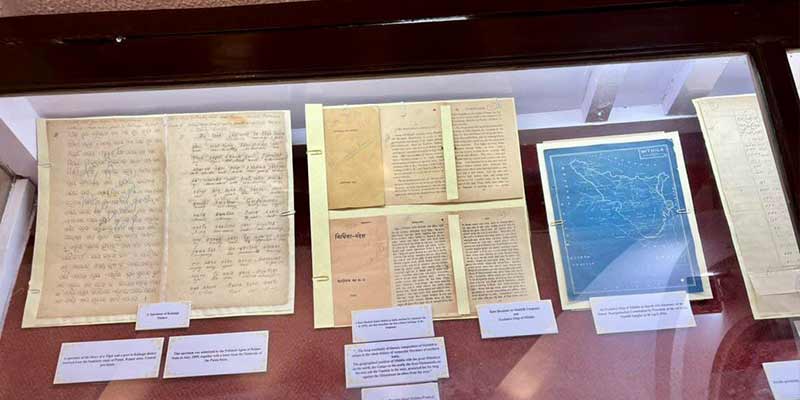- India
- Jun 13
NAI organises exhibition of Gilgit manuscripts
• Minister of State for Culture Meenakashi Lekhi inaugurated an exhibition under the Azadi Ka Amrit Mahotsav (AKAM) titled ‘Hamari Bhasha, Hamari Virasat’ to celebrate 75th International Archives Day at National Archives of India, New Delhi.
• International Archives Day is celebrated on June 9.
• It commemorates the day the International Council on Archives (ICA) was set up in 1948 at a meeting of archivists in Paris.
• ICA is an international non-governmental organisation whose purpose is to promote and strengthen cooperation among archivists and institutions around the world, to preserve archival records and to ensure their availability and accessibility to the public.
Gilgit manuscripts
• The exhibition would include among the most ancient in the world — the Gilgit manuscripts, the oldest surviving manuscript collection in India.
• The birch bark folios (documents written on pieces of inner layer of bark of birch trees; birch bark is known for its resistance to decay and decomposition) contain both canonical (sacred) and non-canonical Buddhist works that throw light on the evolution of Sanskrit, Chinese, Korean, Japanese, Mongolian, Machu and Tibetan religious-philosophical literature, it said.
• They were written between the 5th and 6th centuries AD. The Gilgit manuscripts were discovered in three stages in the Naupur village (Gilgit region), and first announced by archaeologist Sir Aurel Stein in 1931.
What is a manuscript?
• A manuscript is a handwritten composition on paper, bark, cloth, metal, palm leaf or any other material that has significant scientific, historical or aesthetic value.
• Lithographs and printed volumes are not manuscripts.
• Manuscripts are found in hundreds of different languages and scripts.
• Manuscripts are distinct from historical records such as epigraphs on rocks, firmans, revenue records which provide direct information on events or processes in history.
National Archives of India
• The National Archives of India (NAI) is the custodian of the records of enduring value of the government of India.
• It was established on March 11, 1891 at Calcutta (Kolkata) as the Imperial Record Department (IRD).
• It was shifted to New Delhi in 1926.
• After Independence, the IRD was rechristened as the National Archives of India.
• NAI is one of the largest and prestigious centres of archives in the world and holds records running into 80 crore pages, 57 lakh files and 1.2 lakh maps among others.
• It is the biggest archival repository in South Asia. It has a vast corpus of records — public records, private papers, oriental records, cartographic records and microfilms — which constitute an invaluable source of information for scholars, administrators and users of archives.
• The NAI is an attached office under the ministry of culture. The organisation is headed by the director general of archives who is assisted by deputy directors of archives looking after various divisions like records management, administration, training, publication, library, conservation, digitisation, etc.
• The department has a regional office in Bhopal and three records centres in Bhubaneswar, Jaipur and Puducherry.
• The NAI houses central government records of enduring value and private papers of eminent personalities for permanent preservation for the users.
• It is the nodal agency for the implementation of The Public Records Act, 1993 and The Public Records Rules 1997, and assists various ministries/departments in their record management programmes.
• It also renders guidance to various voluntary institutions and individuals for imparting technical know-how for preservation of valuable records and papers.
Mission of NAI:
• Encourage scientific management, administration and conservation of records all over the country.
• Foster close relations between archivists and archival institutions, both at the national and international levels.
• Encourage greater liberalisation of access to archival holdings.
• Help in developing greater professionalism and a scientific temper among creators, custodians and users of records for proper care and use of our documentary heritage.
Manorama Yearbook app is now available on Google Play Store and iOS App Store



